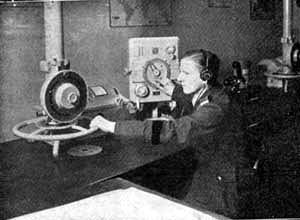
The radiogoniometry as an
aid to the navigation was performed in 1910 with the
pioneering works of Bellini-Tosi (a). In 1919, English
engineer Frank Adcock developed the concept for the
first type of a direction finding system imune to the
dusk effect deficiency.
From 1930, the pace of radiogoniometry developement
was quickened. Amongst them are: inertial guiding device
or the gyroscope, the gyro compass, the artificial horizon,
also with the parallel improvement in the cathode ray
tube it gave birth of ultramodern types of equipments
called panoramic receivers meant that each cathode screen
gives an instantaneous picture of all radio traffic.
(b).
In 1940, the American Air Force started in using the
radiogoniometry in VHF band that had excellent performance
in the positioning of aircrafts which soon was also
adopted by the Bristish and French Air Forces.
|